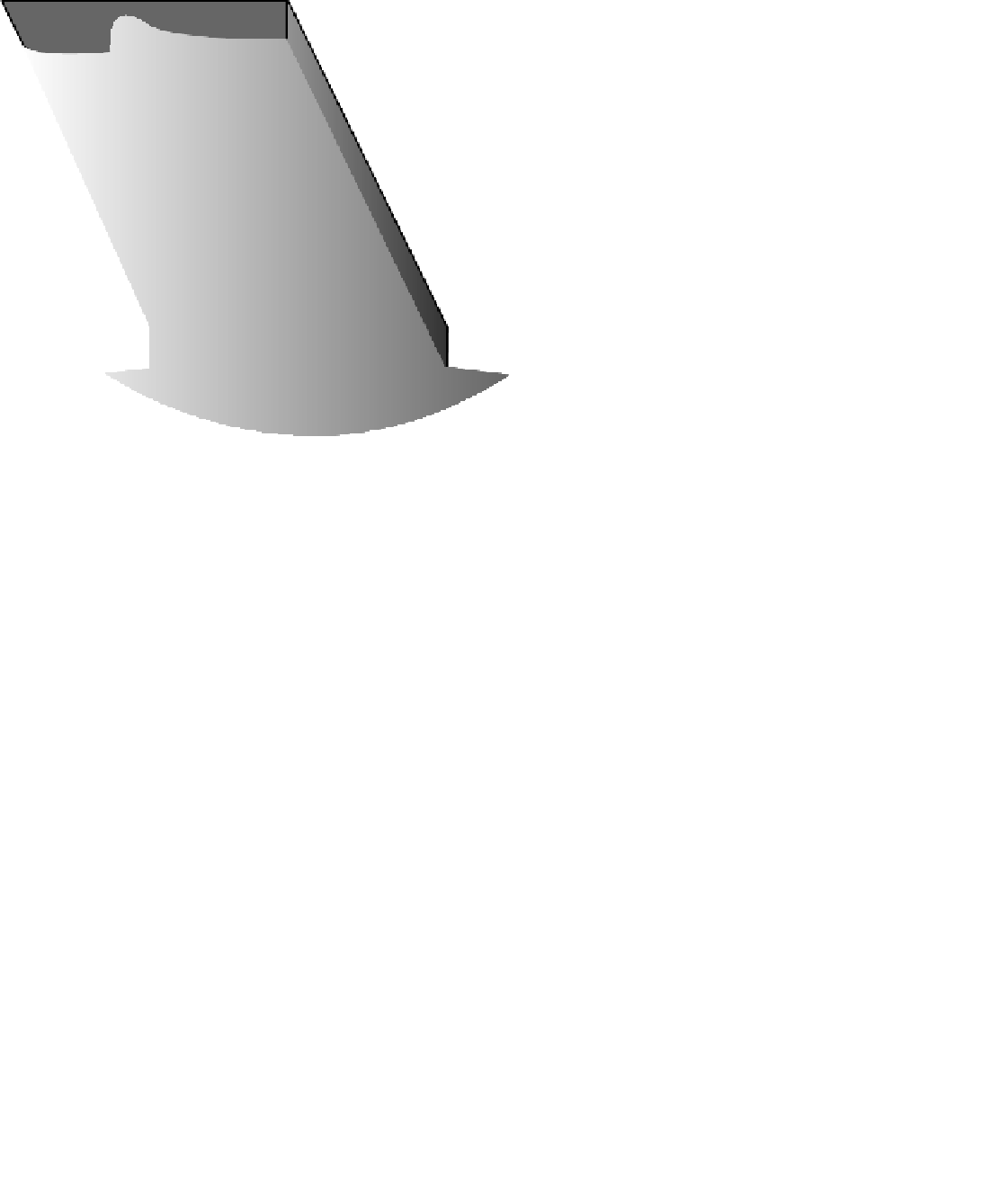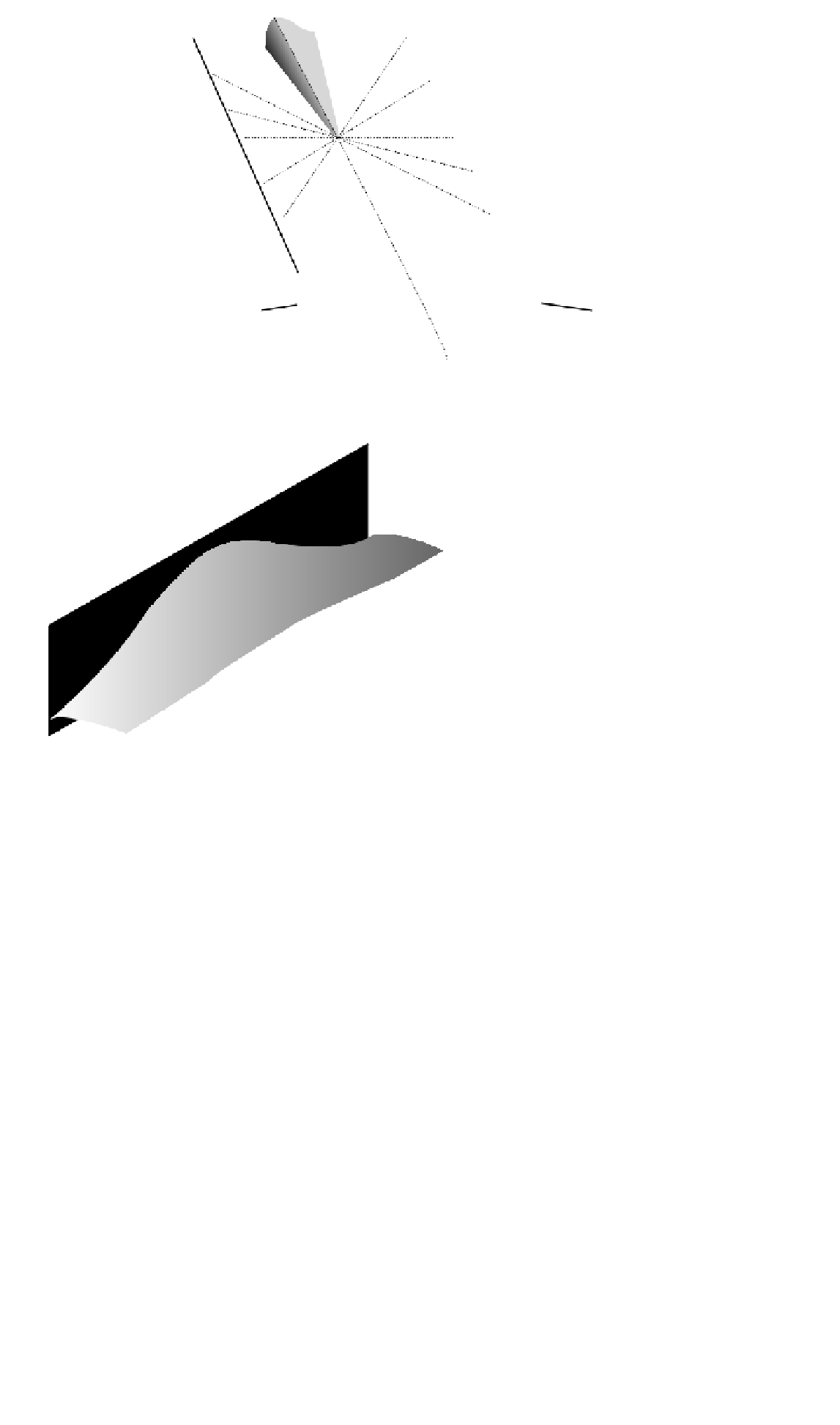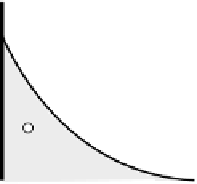Geoscience Reference
In-Depth Information
Ap
Fig. 6.38
The Kelvin rotating tidal wave travels anticlockwise in the northern hemisphere, decreasing in amplitude inward toward the ampho-
dromic point,
Ap
, of zero displacement.
Force balance and Rossby
radius of deformation (L).
Horizontal pressure
gradient force
Coriolis
force
L
Fig. 6.39
Topography and bottom flow associated with the edge of an anticlockwise-rotating Kelvin tidal wave. The rotary component is
neglected for clarity.
this distance the amplitude of any Kelvin wave has reduced
to 1/
e
, 0.37 of its initial value.
We may usefully summarize the vector variation of tidal
currents by means of
tidal current ellipses
whose ellipticity is
a direct function of tidal current type and vector asymmetry
(Fig. 6.40). For example, the inequality between ebb and
flow on the northwest European continental shelf is largely
determined by a harmonic of the main lunar tide. Since sed-
iment transport is a cubic function of current velocity it can
be appreciated that quite small residual tidal currents can










































Search WWH ::

Custom Search